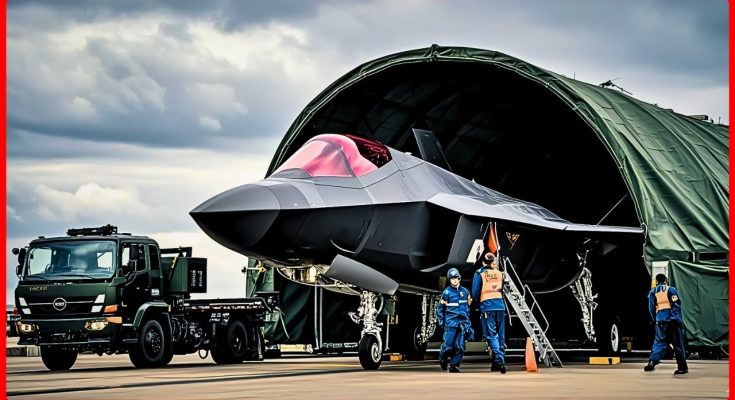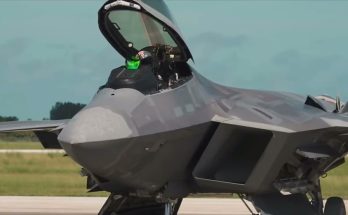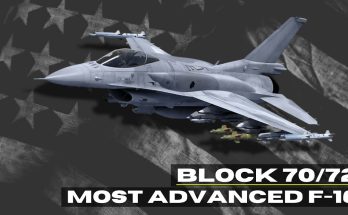Japan has recently made headlines with the successful testing of its new super-advanced fighter jet, a development that has left aviation experts around the world stunned. With the growing tensions in the Indo-Pacific region and an increasing need for self-defense amid geopolitical shifts, Japan’s new fighter jet is not just a technological marvel—it also represents a strategic leap in the country’s military capabilities. The new jet, developed under Japan’s next-generation fighter program, showcases cutting-edge stealth technology, advanced avionics, and unmatched agility, positioning it as a potential game-changer in modern aerial combat.
The Need for a Next-Generation Fighter
Japan’s military has long relied on U.S. aircraft like the F-15J and F-2, which are based on the American F-15 and F-16 fighters, respectively. However, with an increasingly complex and hostile regional security environment, especially due to China’s growing military influence and North Korea’s missile and nuclear programs, Japan recognized the need to upgrade its air force to ensure air superiority and defense independence.
The new fighter, dubbed the F-X, is designed to replace Japan’s aging fleet of F-2 fighters, which are expected to reach the end of their service life in the next decade. Unlike its predecessors, the F-X will not just be a modified foreign design; it is a fully indigenous project developed by Japan in collaboration with international partners. This leap into cutting-edge military technology demonstrates Japan’s increasing desire to assert its autonomy and leadership in defense, especially given the regional and global security challenges it faces.
Technological Advancements
The F-X fighter is packed with groundbreaking technology that sets it apart from traditional fighters. One of the most notable features is its advanced stealth capabilities, which make it nearly invisible to enemy radar. Using radar-absorbing materials and innovative aerodynamic design, the F-X can evade detection, allowing it to carry out reconnaissance and strike missions deep within hostile airspace without being detected. The aircraft’s stealth profile rivals that of modern American fighters, including the F-35, offering Japan a strategic advantage in high-threat scenarios.
Equally impressive are the aircraft’s sensor systems. The F-X features a sophisticated suite of radar and electronic warfare (EW) systems, which allow it to detect and jam enemy radar while avoiding detection itself. These systems provide enhanced situational awareness and allow the jet to track multiple targets simultaneously, giving it an edge in both air-to-air and air-to-ground combat situations. Furthermore, its advanced cockpit design includes a next-generation heads-up display (HUD) and an intuitive control interface, ensuring that pilots can operate the jet with ease and precision even in complex combat environments.
In addition to its stealth and sensor capabilities, the F-X is also expected to incorporate high-performance engines, which will give it exceptional speed and maneuverability. The jet is designed to operate at supersonic speeds without afterburners, allowing it to remain agile while conserving fuel. This makes it highly effective in air-to-air combat, where quick acceleration and precise maneuvering can make the difference between life and death.
Collaboration and Future Plans
The development of the F-X has not been entirely solitary. Japan has worked closely with international defense companies, including the UK’s BAE Systems, to incorporate the latest in aerospace technology. This collaboration ensures that Japan’s fighter will meet the highest standards while benefiting from global expertise.
The F-X is expected to be equipped with the latest generation of weapons, including precision-guided munitions, air-to-air missiles, and potentially even hypersonic weapons, which Japan has been actively researching. As tensions rise in the Indo-Pacific, the F-X will play a crucial role in ensuring Japan’s defense capabilities are on par with the most advanced military forces in the world.
Strategic and Geopolitical Impact
The F-X fighter is not just a leap forward for Japan’s Air Self-Defense Force (JASDF); it is also a statement of Japan’s growing military independence. While Japan maintains its pacifist constitution, the rise of China and other regional threats has led to a gradual shift in Japan’s defense posture. With the F-X, Japan is asserting its ability to defend itself without reliance on foreign military support. This self-reliance aligns with Japan’s broader goal of becoming a more active and influential player in regional security dynamics.
The development of such an advanced fighter also carries implications for the broader geopolitical landscape. Japan’s new capabilities could potentially shift the balance of power in the Indo-Pacific region. Countries like China and Russia will undoubtedly take note, leading to a possible acceleration of their own military advancements in response. At the same time, Japan’s ability to field a next-generation fighter could strengthen alliances with other nations in the region, such as the United States and Australia, who are similarly focused on maintaining air superiority in a contested region.
Conclusion
Japan’s new super-advanced fighter jet is a technological marvel that has stunned aviation experts and shifted the trajectory of Japan’s military capabilities. With its state-of-the-art stealth features, advanced sensors, and exceptional maneuverability, the F-X is poised to play a critical role in Japan’s defense strategy. As tensions in the Indo-Pacific continue to grow, Japan’s new fighter represents not just a leap forward in aerospace technology, but a bold statement of its intent to secure its position as a key player in regional security. The F-X marks the beginning of a new era in Japan’s defense capabilities, and its impact will be felt far beyond Japan’s borders.



